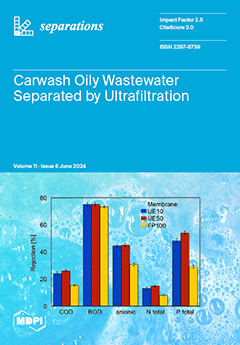Background and Objectives:
Cimicifugae Rhizoma, also known as ‘Sheng ma’ in Madeiran, is a widely used Chinese herbal medicine that has several pharmacological qualities, one of which is its antioxidant activity. Isoferulic acid, a prominent phenolic compound found in
Cimicifugae Rhizoma,
[...] Read more.
Background and Objectives:
Cimicifugae Rhizoma, also known as ‘Sheng ma’ in Madeiran, is a widely used Chinese herbal medicine that has several pharmacological qualities, one of which is its antioxidant activity. Isoferulic acid, a prominent phenolic compound found in
Cimicifugae Rhizoma, has potent antioxidant properties. This study was aimed to comprehensively analyze the components in
Cimicifugae Rhizoma and rat plasma to evaluate the in vitro antioxidant and anti-inflammatory properties of
Cimicifugae Rhizoma extract and Isoferulic acid as potential candidates for developing herbal formulations targeting podocyte injury in diabetic nephropathy for further clinical utilization. Materials and Methods: UPLC/Q-TOF-MS and HPLC were utilized as analytical tools to identify components of
Cimicifugae Rhizoma extract or rat plasma after administrating it. MPC5 cells were cultured with H
2O
2 and high glucose and subjected to oxidative stress injury. The CXCL12/CXCR4 system plays a crucial role at certain stages of multiple kidney diseases’ injury. Apoptosis-related and target CXCL12/CXCR4/mTOR/Caspase-3 and Cask protein levels were assessed, and the levels of inflammatory-related factors, motility, morphology, ROS level, and apoptosis in podocytes were tested. Results: A total of 82 and 39 components were identified in the
Cimicifugae Rhizoma extract and plasma, and Isoferulic acid content was determined as 6.52 mg/g in the
Cimicifugae Rhizoma extract. The
Cimicifugae Rhizoma extract (1 μg/mL) and Isoferulic acid (10, 25, 50 μM) considerably decreased high glucose and oxidative-stress-mediated toxicity, impaired mobility and adhesion and apoptotic changes in MPC5 cells, and reversed inflammation response. Moreover, the
Cimicifugae Rhizoma extract and Isoferulic acid down-regulated Cask, mTOR, and Caspase-3, while significantly blocking the overactivation of CXCL12/CXCR4 in podocytes stimulated by oxidative stress and high glucose. Conclusions: These results indicate that the renal protective mechanism of the
Cimicifugae Rhizoma extract and Isoferulic acid on simulating H
2O
2-induced podocyte injury involves mainly the of CXCL12/CXCR4 pathways and the inactivation of oxidative-stress-mediated apoptotic pathways after comprehensive qualitative and quantitative research by UPLC/Q-TOF-MS and HPLC. These findings provide an important efficacy and ingredient basis for further study on the clinical utilities of
Cimicifugae Rhizoma and Isoferulic acid on podocyte and kidney impairment.
Full article





